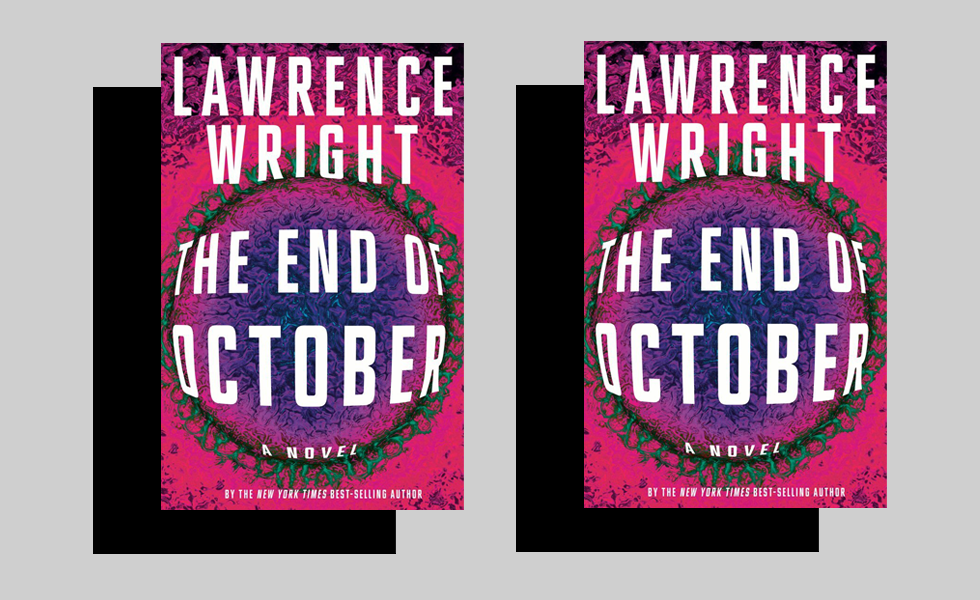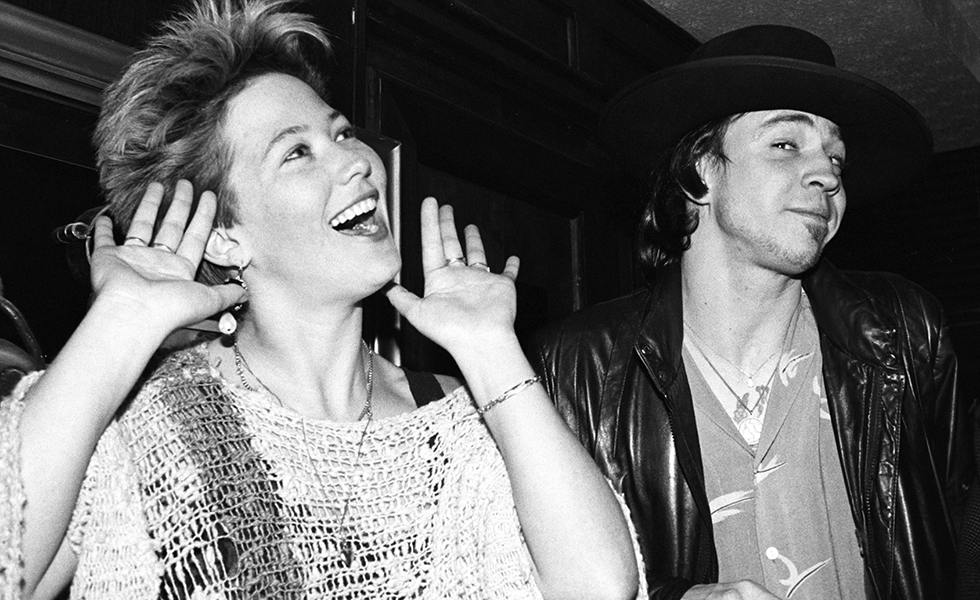
Lawrence Wright Embraces Pandemic Panic in ‘The End of October’
The latest novel from the Texas author proves a thriller for our times.
Just a couple of weeks ago, in the New York Times, the Nobel Prize winner Orhan Pamuk opined that the Italian writer Alessandro Manzoni wrote the most realistic novel ever about plague. Having not read Manzoni, I haven’t the slightest. But Pamuk—a Turkish writer whose bestsellers come to most Americans in translation—has solid credentials and his own pandemic novel coming out, Nights of Plague.
Pamuk’s essay name-checks Albert Camus and Daniel Defoe for their contributions to the pandemic canon. Discovering and rediscovering echoes of past tragedies in the ongoing, global coronavirus crisis, I embraced the idea that the classics of contagion promised a measure of solace. Now Austin-based Pulitzer Prize winner Lawrence Wright, a longtime contributor to the New Yorker, who has covered Scientology and terrorism, written plays and screenplays, a boundless talent—he acts! he rocks the keyboard in a band!—has published such a wildly prescient novel about infectious disease that Pamuk’s wise and insightful meditation on literature strikes me as shortsighted.
The End of October came out on April 28, and it is as captivating as it is disorienting to step Alice-like into Wright’s vision of an influenza-ridden planet.
In truth, we would be foolhardy to approach Wright’s novel, a thriller written as a follow-up to an old screenplay idea suggested by Ridley Scott (of Blade Runner fame), as some sort of oracle. Then again, you could look for worse places for clues that might help make sense of the traumatic uncertainty carried by COVID-19. On a state and national level, public health policy is being determined in a science-averse political vacuum—unless it’s all part of a conspiracy. Memes of sinister origin pollute social media. Proms aren’t happening. Masks are required for shopping. Why not follow a writer like Wright, a meticulous reporter who won a Pulitzer for his nonfiction 9/11 exposé, The Looming Tower? Like disease itself, The End of October can be sickening—not that Wright should be faulted for that.
Solid reporting does give remarkable exactness to Wright’s imagined tale of a havoc-wreaking novel virus running amok in the very near future. Even taken as speculative fiction, the author approaches his subject with gravity befitting the stakes.
As early as the 1850s, Pamuk notes, “Pilgrims traveling to the Muslim holy lands of Mecca and Medina became the world’s most prolific carriers and spreaders of infectious disease.” In The End of October, the virus-hunting protagonist, a microbiologist and father of two named Henry Parsons, chases an infected hajji to Saudi Arabia. Rather than asking “What if?” Wright may be telling us what’s next.
Having interviewed epidemiologists, viral immunologists, real-life microbe hunters, and vaccine experts, Wright, in turn, manages to unfurl an impressive true history of infectious diseases, from smallpox to the Spanish flu to polio, SARS, and MERS. Characters explore their treatments, detailing how medical professionals and scientists defeated earlier contagious outbreaks. Throughout, I felt compelled to comb through these mesmerizing, stylish sections for intelligence about COVID-19. Instead, I had to remind myself time and again that the made-up Kongoli flu remains wholly distinct from COVID-19. But what makes the novel even more arresting are the moments when Wright imagines interstitial environmental and geopolitical events, giving his end-of-days vision an uncommon verisimilitude.
At first, he writes chillingly: “A kiss, a cough, a casual handshake, could kill.”
Even taken as speculative fiction, the author approaches his subject with gravity befitting the stakes.
And then, a few pages later: “Political pressure was building to open the borders and let the economy breathe. In places where the flu had not yet been reported, people told themselves that, for the moment, they were still safe.”
Finally, Wright addresses the experience of infection: “The fever came on quickly, along with the chills. The rapid contraction and relaxation of muscles was the body’s way of generating heat to fight the infection, but the shaking was unlike anything he had experienced before. Whether it saved him or killed him, there was nothing he could do about the cytokine storm that was waging war on his behalf.”
These tropes have been seen in plenty of books and movies, but current events breathe new life into what could have otherwise been mercenary cliches.
Not a week before I received my download of the book—both the publishing and shipping industries are messed up enough that the publicist could not confirm a hard copy—I attempted to stream I Am Legend, the postapocalyptic Will Smith vehicle, with my family. It did not go down well. We had to quit watching before the fateful scene where the hero has to euthanize his dog, Sam. Sam ends up in danger of being turned into a zombie, so the Army virologist played by Smith, stranded in New York City, kills her. Given that a month into our stay-at-home period I had acquiesced to my daughter’s desire to foster a puppy, I take full responsibility for my parenting fail. But can you blame me for seeking catharsis? A few nights later, we tuned in to the farce Zombieland, which was also a little freaky.
Still, compared with these popular Hollywood products, Wright plays it pretty straight with the saga of Henry Parsons. For one thing, no zombies show up.
If you’ve been on a serious media fast, though, The End of October may not be for you. Wright portrays an alternative reality, to be sure, but his scientific bona fides remain bomb-proof. A personal salve for me, as a journalist who has been awarded a few assignments about COVID-19 since the first U.S. diagnosis in Seattle back in January, is the knowledge I’ve gleaned from dedicated health care professionals. In short, despite many questions about its transmission, COVID-19 is no match for the virulent Kongoli. The latter appears to have something like a 50 percent fatality rate, while coronavirus in this country kills less than 2 percent.
It occurs to me that these are the sorts of factual touchstones one reaches for when confusion reigns. Whether reading Wright, or catching a White House news conference, or debating with friends whether Texas reopening means we can take a fishing trip, I put my hand in this imagined pocket and reach for my kernels of truth. It brings serenity in the face of so much unknown to realize that chances are good my family will slip through, even if we worry about aging grandparents, or what it might mean that my wife has suffered recurrent pneumonia and could be high risk.
What makes the novel even more arresting are the moments when Wright imagines interstitial environmental and geopolitical events, giving his end-of-days vision an uncommon verisimilitude.
In the novel, Parsons and his colleagues scramble in a concerted effort to fight back. It’s delirious, a sort of propulsive combat that turns scientists into action heroes, transforming a serious, straight-talking immunologist resembling Dr. Anthony Fauci into an archetypal badass who could be played by someone like Brad Pitt in his heyday. When characters drawn from CDC and WHO experts attempt to articulate the threat of a second or third wave of Kongoli, it sends shivers down the reader’s spine.
Throughout, Wright keeps the various threads pulled taut—medicine, military matters, international intrigue, economics. He puts the “author” back into authoritative when a character chides the national security adviser: “If you paid any attention to the role of disease in human affairs, you’d know the danger we’re in. We got smug after all the victories over infection in the twentieth century. But nature is not a stable force. It evolves, it changes, and it never becomes complacent. We don’t have the time or resources now to do anything other than fight this disease. Every nation on earth has to be involved, whether you think of them as friends or enemies. If we’re going to save civilization, we have to fight together and not against each other.”
These sentiments echo the passage that closes Pamuk’s essay in the Times: “For a better world to emerge after this pandemic, we must embrace and nourish the feelings of humility and solidarity engendered by the current moment.”
Today, from the stockpiling of toilet paper to armed protesters on the steps of the Capitol in Austin, where Wright makes his home, it feels as often as not as though the center will not hold. It helps to keep in mind that the seed for The End of October is not COVID-19; indeed, Wright says the story grew out of his speculation about the sort of disaster that led Cormac McCarthy to write his masterful novel The Road, a haunting book that follows a father and son across a desolate post-plague landscape.
Wright’s preceding book was a warmhearted memoir of place, God Save Texas, which embraced all the strange and wondrous aspects of life in the Lone Star State. But it was Wright’s play Cleo, about the star-crossed relationship between Elizabeth Taylor and Richard Burton, that my mind returned to late at night when I needed a break from corona. I caught the show in its world premiere at the Alley Theatre in Houston (which has suspended its current season and gone into an emergency fund-raising campaign) in 2018 and was carried away on the wings of their tempestuous love affair. There is real romance at the heart of The End of October, too, and faced with heartache triggered by the daily news, it brought tears to my eyes.
We have a surfeit of choices when it comes to the media that will demystify this moment in history—and, for most of us who are abiding social distancing, donning masks according to the best public health advice, the end of October can’t get here soon enough. For readers with a strong stomach and a desire to lift the veil of certainty, however, I have to say The End of October has arrived right on time.
Read more from the Observer:
-
The Disappeared: Genetic genealogy is helping to crack cold cases and identify victims left nameless for decades. The process is surprisingly effective—and controversial.
-
Texas Health Officials Undercount COVID-19 Cases by Excluding Some Prisoners Who Tested Positive: The Observer identified at least nine Texas counties where current prison cases make up more than 10 percent of the total COVID-19 cases in the county.
-
Air Pollution Was Already Killing Us. Then Came the Coronavirus. Why Won’t the EPA Act?: By refusing to strengthen particulate matter standards, the EPA is putting more people at risk.


